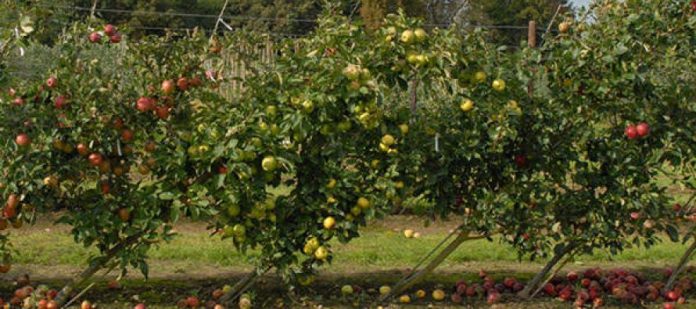There are few things more rewarding than watching your orchard full of fruit trees and berries grow.
Keeping an orchard is a long term investment. Most fruit trees won’t even give you a hint of production in the first three years. When you consider that most have a lifespan of 20 to 30 years, it is a great long term investment.
Preliminaries
Before you get started on your backyard orchard, here are a few things that you must consider and prepare for:
- Growing and caring for fruit trees is a year-round task.
- Starting and maintaining an orchard is only as satisfying as the hard work you put into it.
- It pays to know a few experts or experienced gardeners and fruit growers – get in touch with your local nursery, their input is very helpful.
- Planning and preparation are the keys.
- Do not get flustered at this point. Planning and designing are meant to be an exciting step where you can let your creativity run free.
- An orchard is meant to be like a living thing, always changing and adjusting.
- If things go wrong, you can always fix it and learn from it. Right now, you just need to plan, plant, and get things rolling.
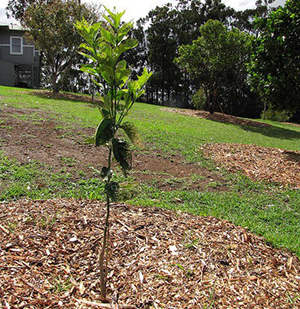 Planning Your Backyard Orchard
Planning Your Backyard Orchard
Before you start designing your orchard, there are some important things you have to take note of:
The Area’s climate
This refers to the more specific information as to how the weather and climate affect your backyard. It includes factors like the following:
- Sunlight – Where does the sunrise? Which part of the yard gets the most sunlight? What part is obscured by the shadow of your house, porch, or shed? How many hours does a certain part of the yard stay under sunlight? These factors help in choosing what trees to plant and where to position them. Naturally, you would like to put heat-loving plants where the sun is and those that are more sensitive away from the sun.
- Topography – Does your yard have a slope? Do you have small hills? These things can be used to your advantage. Some trees that require more chill hours, for example, can be planted at the foot of the slope to maximize the cool air settling there. It is also possible that such formations affect how water settles or moves in your yard when it rains. You have to take these into consideration before placing trees or planning counter-measures.
- Soil – What kind of soil do you have in your yard? Are they of the same kind? Where does the water drain? If you plan on planting straight in the ground, you might need to import soil to suit your needs. If you want to grow potted trees, you may also want to look into this before you use the soil found on your lot.
- Water – Are there natural sources of water in your yard? Does water pool in certain areas only? Can you use this to your advantage? Remember that too little or too much moisture can hurt your trees.
- Wind – Is it windy where you plan on planting? What direction does the wind come from? Can it be buffered?
- Lines of Sight – What can you see from your yard? What do you want to be covered or exposed?
Start Designing
You most likely already have several ideas in mind on how you want your backyard to look like, and you’ve already gone over pictures of backyards you’d like to use as a model. If not, it would not be a bad idea to do this first.
It is also good to get your family and friends involved. After all, you should enjoy the orchard and the fruits with others.
Here are just a few things that can be added to your backyard orchard:
- A compost pile that can serve as a green way of disposing of the things that you clean up from your yard. Regular monitoring should keep the pile stink-free.
- A patio can be built into your design. So you have a place to enjoy your fresh fruits.
- A lawn is also a traditional way to go. However, be wary that lawns and trees compete for the same nutrients and can interfere with each other.
- Paths are also a good idea to get around the ground cover you plan on using. They will also help you when harvest time comes.
- A shed is also good as you will eventually realize that you will need more tools to keep your trees in shape.
- A vegetable garden is also a good addition to your yard. Proper placing of your trees and crops can make the set-up beneficial. Some vegetables will thrive under the cover of your fruit trees.
Choosing the Right Trees
It is always exciting to choose the first fruit trees to plant. There are a wide range of trees available and if you have not decided what to plant yet, here are some helpful tips:
Some Trees to Look Into:
Here are some of the common trees that can be grown in most areas; you can likely find a variety suitable for you:
#1. Peaches and Nectarines
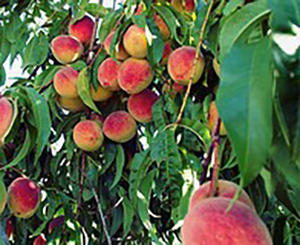
Peaches and nectarines come in a great number of varieties, and it can be tough to decide which you want. The best advice is to select the one that tastes the best to you. A standard Peach or Nectarine can reach up to 25 feet tall and just as wide. Don’t fret though, you can easily prune and train them to a manageable 10 feet. If that is still too tall for you, there are numerous dwarf varieties that you can choose from.
#2. Apples
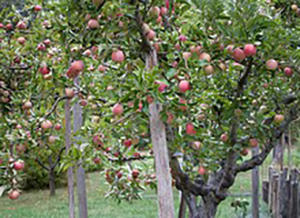 Everyone likes apples. For that reason, several varieties are also available to suit several climates all over the world. The only places where apples don’t grow are in the warmest tropical climates. Like all other fruits, take close note of the variety that works for your area as they need varying amounts of chill. You can also look for resistant varieties that can weather diseases and cut down on maintenance costs. You should also consider pollination. Apples are mostly self-fertile, but some varieties need cross-pollination. It is best to plant at least a pair of apples.
Everyone likes apples. For that reason, several varieties are also available to suit several climates all over the world. The only places where apples don’t grow are in the warmest tropical climates. Like all other fruits, take close note of the variety that works for your area as they need varying amounts of chill. You can also look for resistant varieties that can weather diseases and cut down on maintenance costs. You should also consider pollination. Apples are mostly self-fertile, but some varieties need cross-pollination. It is best to plant at least a pair of apples.
#3. Citrus
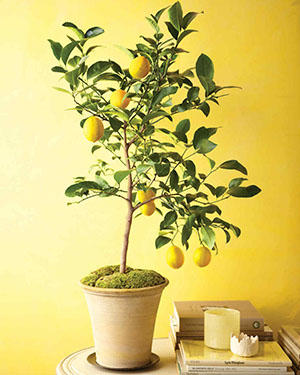 These are some of the easiest fruit trees to grow. They are mostly free of hassles and can easily be recommended for beginners and those who want low maintenance trees. Unfortunately, citrus growing is a bit limited to areas that are warmer as it has little tolerance to the winter chill. There is an option, however, to grow citrus trees in pots and move them indoors when the colder months arrive. It’s another option for your backyard if you want to grow them in containers as these trees are smaller than most other fruit trees.
These are some of the easiest fruit trees to grow. They are mostly free of hassles and can easily be recommended for beginners and those who want low maintenance trees. Unfortunately, citrus growing is a bit limited to areas that are warmer as it has little tolerance to the winter chill. There is an option, however, to grow citrus trees in pots and move them indoors when the colder months arrive. It’s another option for your backyard if you want to grow them in containers as these trees are smaller than most other fruit trees.
Caring For Your Orchard
#1. Protecting your trees from the forces of nature
If you are willing to move your trees around, provide them with lighting or frost blankets for warmth, then it will be solely up to you. Plan and prepare for these contingencies well.
#2. Fruit thinning
Thinning refers to the removal of excess fruit on your trees. It might seem counter-intuitive to a budding gardener to strip your tree of potential harvest, but this is also an important step to keeping your trees productive and healthy.
#3. Getting water to your trees
Watering your trees can be done in several ways depending on your preference and manner of preparation. Some gardeners prefer to do this by hand with a handheld sprayer or wand.
#4. Maintaining trees in summer
Summer pruning is an important part of maintaining the health of your tree. A tree puts a lot of its resources into producing more leaves so it can collect more solar energy to support more growth. When you remove some of the leaves in the midseason, thereby controlling the sunshine it gets, you can manage the size and growth of your tree.
#5. Harvesting and enjoying your fruits
When harvest time comes, celebrate! You have just nurtured a tree through the difficulties of the year. By this time, you should have a bit of fruit on your trees, and they are looking ready to eat. The big question is: when to pick your fruit. Well, this isn’t a difficult question to answer. You simply taste the fruit. Your fruit is ready when you decide it is. It largely depends on what you intend to do with the fruit after harvest. If you intend on keeping the flavor of the fruit with low sugar, you can do so.
Plan for harvest time
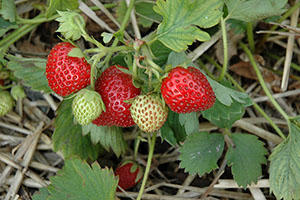 Using my orchard as an example, my June Bearing Strawberries come ripe then go out of season just as the raspberries are ripening. The raspberries and gooseberries begin coming out of their peak production just as the early plums and blueberries come ripe. About the time the last plum is picked the peach trees are ready for harvest and canning. This is all followed up by a succession of apples that takes me through September and into early October.
Using my orchard as an example, my June Bearing Strawberries come ripe then go out of season just as the raspberries are ripening. The raspberries and gooseberries begin coming out of their peak production just as the early plums and blueberries come ripe. About the time the last plum is picked the peach trees are ready for harvest and canning. This is all followed up by a succession of apples that takes me through September and into early October.
Dealing with diseases and common pests
One of the best ways to prevent disease is by making sure you buy certified plants from a reputable dealer. If you can find and afford virus indexed trees, then it is all the better. The best defense against fungus is proper pruning. While fungus and spores can live through the winter in the soil as well as bark, they travel on the wind and breed wildly in the wet shadows under a plant’s leaves. Proper pruning to allow the wind to ventilate the tree will reduce the amount of time a fungus has to set up a shop.
Preventing insect pests
Every orchard tends to draw its own bugs depending on region and climate. Just like molds and fungus you need to be mindful of not planting too close to your garden. If you are growing dwarf-sized trees you might be able to get by with handpicking the occasional bug you can see munching on a leaf.
Dealing with animal problems
The deeper you live in the country the more animals will be attracted to the succulent delights of the leaves and fruits of your orchard.
In my experience birds are enemies of summer while rabbits are the bane of winter. Rabbits are by far the most dangerous because if they are left unchecked they can eradicate your entire orchard in a single winter.


